 |
 |
 |
| |
GENDER-AFFIRMING SURGERY ASSOCIATED WITH
HIGH VIRAL SUPPRESSION AMONG TRANSGENDER PWH
|
| |
| |
CROI 2021 March 6-10 reported by Jules Levin
Cristina Rodriguez-Hart , Gagarin Zhao , Zil Goldstein , Asa Radix , Lucia Torian1
1New York City Department of Health and Mental Hygiene, Long Island City, NY, USA, 2Callen-Lorde Community Health Center, New York, NY, USA
Background:
Although HIV surveillance contains information on HIV outcomes among transgender people with HIV (TPWH), it does not include other important data, e.g., gender-affirming care, which may impact HIV outcomes such as viral suppression (VS). 79% of NYC TPWH are enrolled in Medicaid, and recent policy changes have extended coverage for gender-affirming healthcare. We matched Medicaid data with the NYC HIV Registry to ascertain the association of gender- affirming surgery and VS.
Methods:
Because Medicaid claims do not specify transgender status, an algorithm using sex, diagnosis codes, and prescriptions was developed and applied to Medicaid claims from 2013-2017. This cohort was matched to the HIV Registry to identify which TPWH obtained gender-affirming surgery. We compared VS among TPWH in Medicaid who had surgery to TPWH who did not access Medicaid and cisgender women and men. We compared VS by type of surgery and examined trends in VS pre- and post-surgery.
Results:
We identified 6,335 transgender persons in Medicaid in 2013-2017, 1,764 (28%) of whom were TPWH. 185 (10%) TPWH in Medicaid had gender-affirming surgery. They had higher VS at last lab and the greatest increase in VS over the five years (86.5%, 8.9% increase) compared to TPWH who did not access Medicaid (78.6%, 7.5% increase), cisgender women (82.3%, 8.7% increase), and cisgender men (84.1%, 6.9% increase). Those who had "bottom" surgery had the highest proportion suppressed (89%) compared to other types of surgery. VS increased pre-surgery, at least in part due to the common practice requiring viral suppression prior to surgery, and remained high over time (66.3% 2 years prior, 76.9% 1 year prior, 86.3% 1 year after (among everyone), and 87.7% 2 years after (among those who had surgery prior to 2017)).
Conclusion:
Medicaid is a valuable source of data on transgender individuals and can complement data collected by HIV surveillance. While we cannot determine causality, it appears that preparing for gender-affirming surgery may be an important motivator in becoming virally suppressed. Moreover, it is associated with sustained high viral suppression, which is known to lead to improved survival and quality of life. Expanding Medicaid programs to include gender-affirming surgical care may be associated with better health outcomes among TPWH.
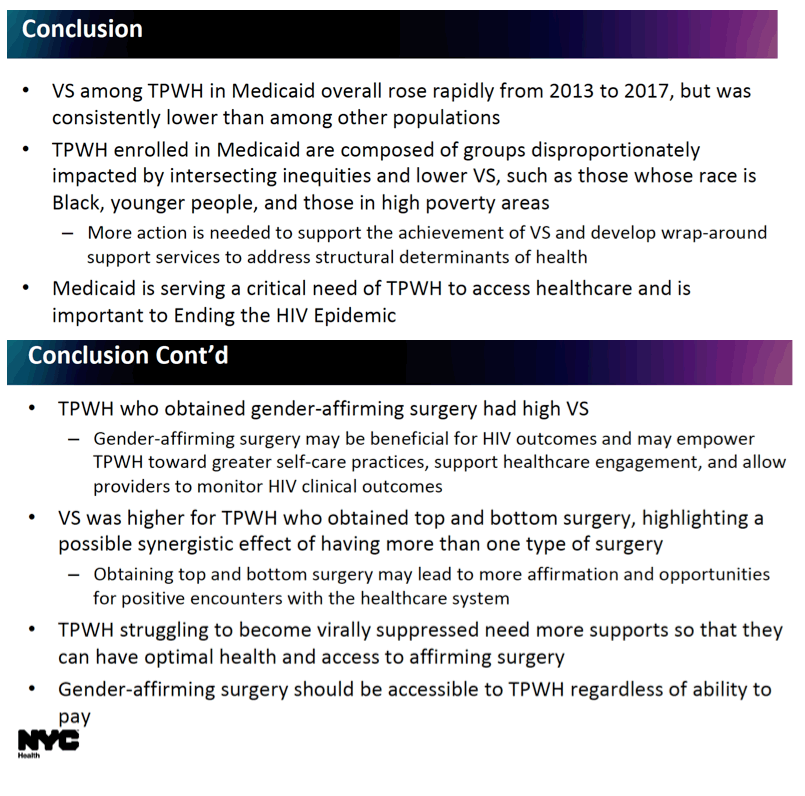
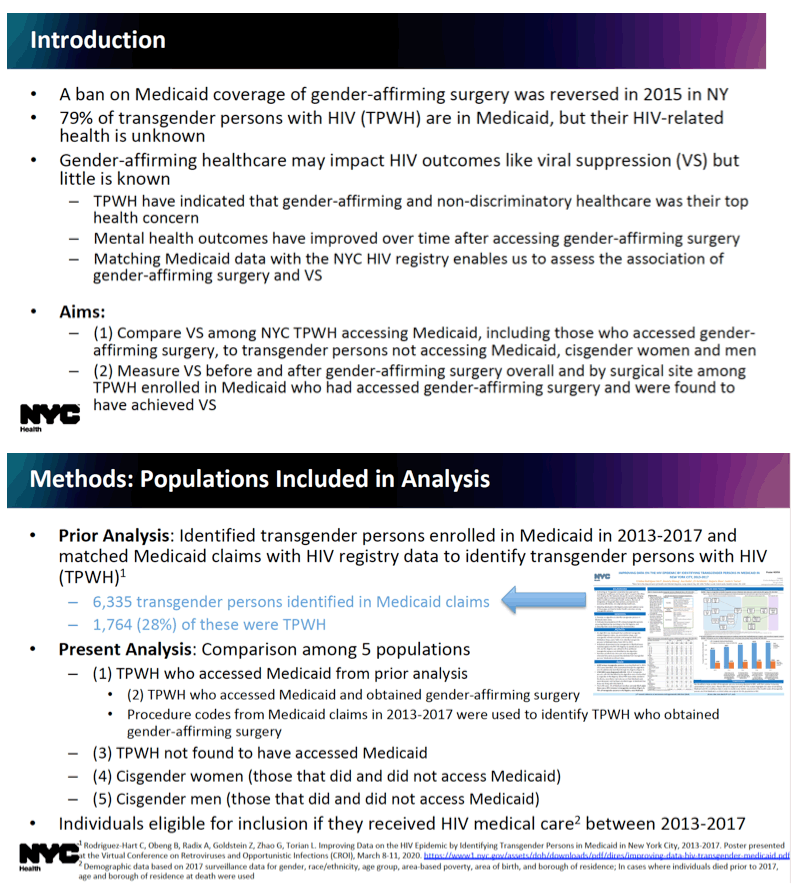
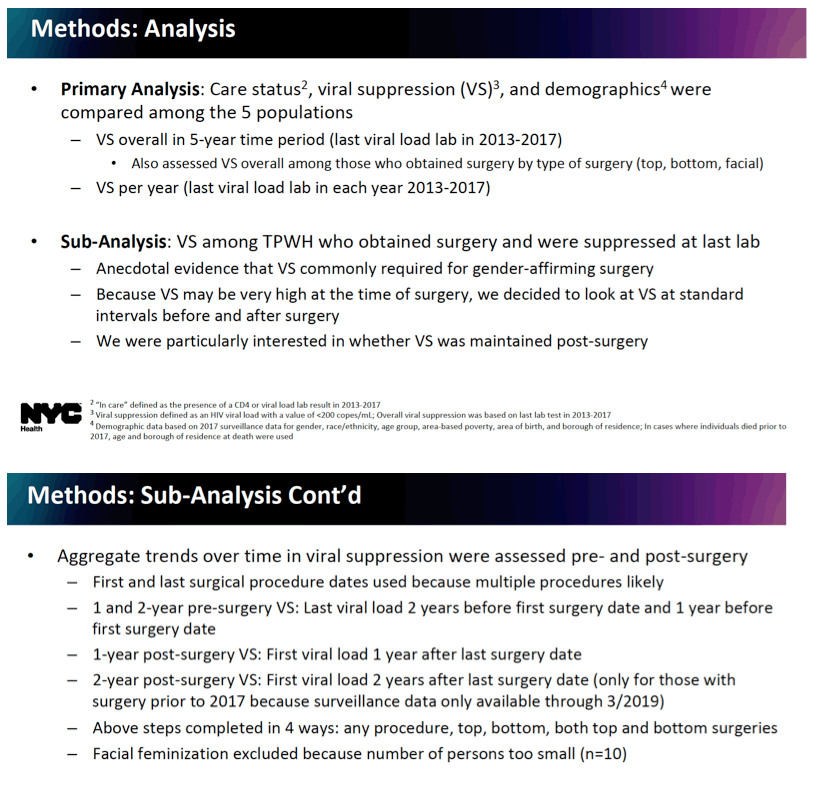
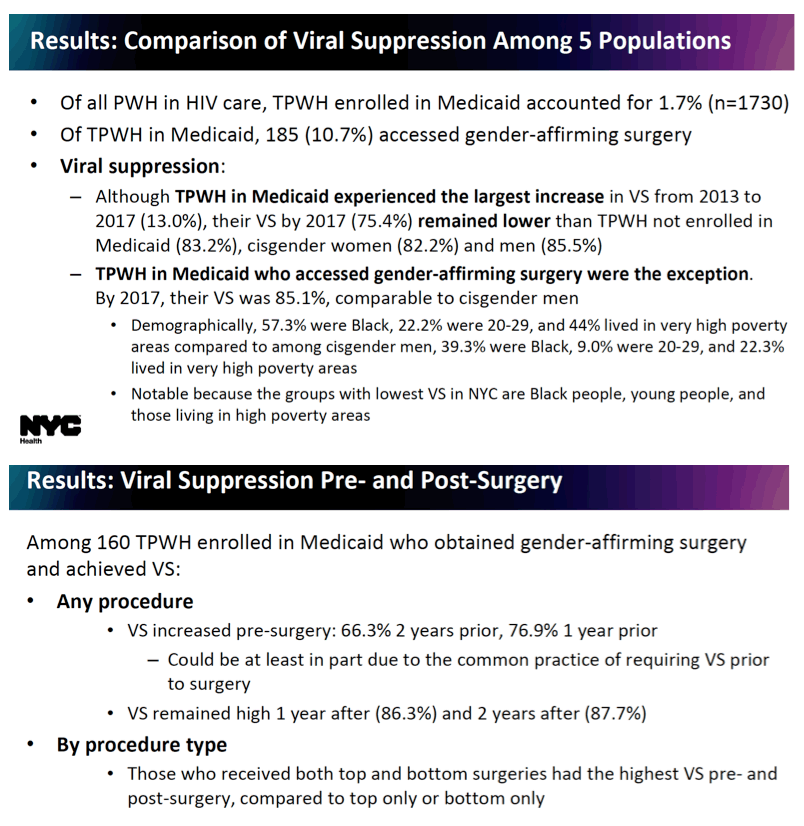
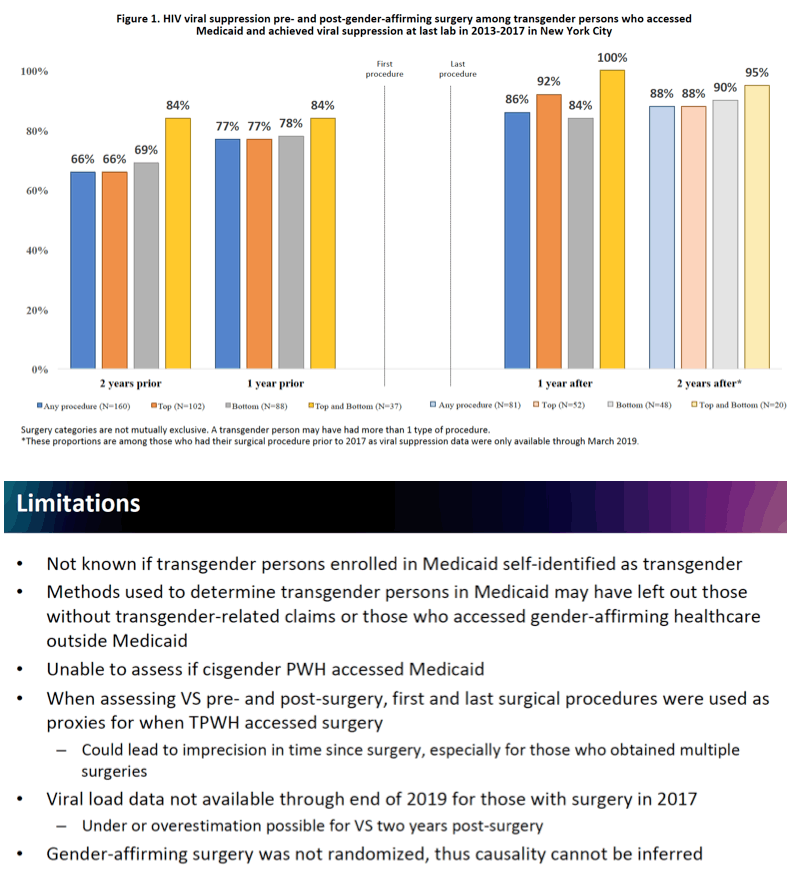
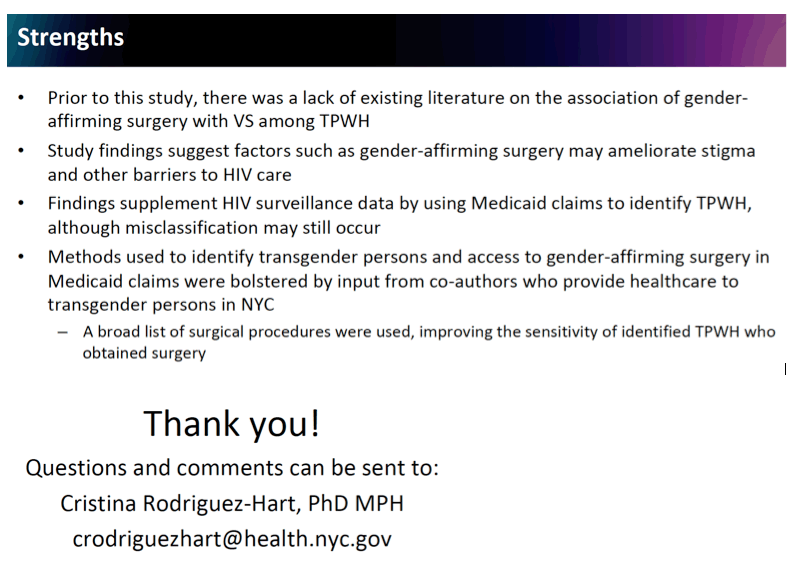
|
| |
|
 |
 |
|
|